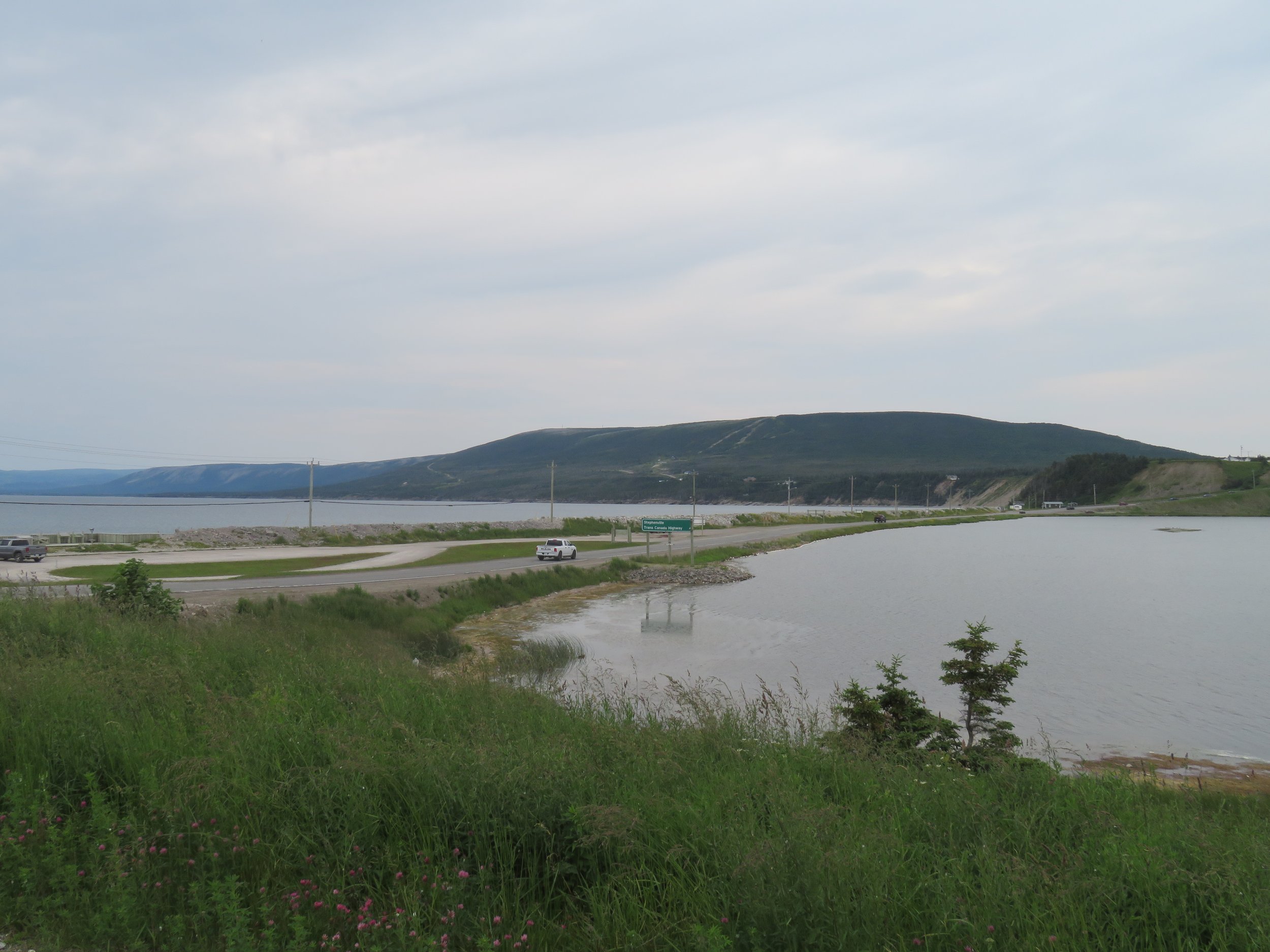The Port au Port Peninsula and On to Port aux Basques
/Time was flying and it was time to think about beginning to head south to Channel-Port aux Basques and the ferry for Nova Scotia. We could have easily spent another month or more exploring Newfoundland, but we still had three more Atlantic provinces to visit before the summer drifted away from us.
The Port au Port peninsula juts out like a hook into the Gulf of St. Lawrence. It looked appealing and it was on the way, so why not explore? The area is particularly known for its high concentration of French Acadians.
A little history… Acadia was originally a colony of French settlers in New France (Nova Scotia). The colonists spread out over today’s maritime Canada and into parts of Maine. During the French & Indian War (1754-1763), the British suspected that the Acadians were loyal to France. Some were, some weren’t and many were neutral. The British, however, didn’t distinguish and carried out ‘The Great Expulsion’ (Grand Dérangement) whereby Acadian families were separated and more than 11,500 Acadians were forcefully deported from their maritime homes and sent back to England or the American colonies. As many as 1/3 died from disease and drowning during the brutal move. Some ended up in French Louisiana and are known today as Cajuns. Others fled to other parts of maritime Canada including those who came to Newfoundland, especially the area we were visiting.
‘Ships Take Acadians into exile - 1755’ by Acadian painter, claude T. Picard
Their culture and language have survived and are quite different from the French Quebecois. In fact, the Port au Port peninsula is home to Newfoundland's oldest Acadian communities.
The peninsula is connected to mainland Newfoundland by a very skinny isthmus called ‘The Gravels’. Only .31 miles (500 m) wide, you can see both sides of the Atlantic from a vantage point on the western hill.
This sandy, skinny isthmus connects the Port au Port peninsula to mainland Newfoundland.
There is a gravel parking area and the shore is gravel-ly hence its name. It is believed Jacques Cartier landed on this beach in 1534.
The Acadian presence is notable immediately. Signs are in French. Surnames are French. The churches all have very French names. If you stop at a shop, the locals will be almost certainly be speaking French amongst themselves although they quickly switch to English for customers. The distinctive Acadian flag… a tricolor red, white and blue with the gold Stella Maris (Star of the Virgin Mary)… flies proudly in most every yard.
The route took us along winding roads edging on high cliffs above the ocean far below. We saw a sign for Boutte du Cap Parc and thought we’d take a look. We traveled a mile or so along a gravel road and to our surprise, we found not only a scenic park, but a free campground. There were already several campers firmly ensconced in their places when we arrived, but we had no trouble finding a spot. Our campground was surrounded by bellflowers and daisies.
Near sundown, we walked up a road a ways to view a beautiful, albeit hazy, sunset.
An old Acadian oven was in the entry area and a sign indicated campers were free to use it with assistance from a local.
Acadian bread oven at Boutte du cap
In the morning we continued our tour of Cape St. George and the peninsula then returned to the main road south for our last day in Newfoundland. We had booked a reservation at the J. T. Cheeseman Provincial Park for the night, but checked out the ferry terminal first so we could be sure we’d be on time for the ferry’s morning departure. It wasn’t hard to find… it’s the end of the road… and the land.
The night at the provincial park was lovely. Hot showers and laundry were followed by a dinner of mussels steamed in white wine and Provençal herbs with garlic and a crusty baguette to soak up all the luscious broth. We washed it down with a crisp Sauvignon Blanc. Ooooh la la! We were feeling French!
It rained all night through and was quite soggy when we left for the ferry terminal. We were queued up three hour in advance as instructed at Port aux Basques waiting to board the ferry.
Incredulous as it might seem, the ferry boarded and departed on time and we bid adieu to Newfoundland, watching it disappear in the fog behind us.
Within minute, The Channel Head Lighthouse in Port Aux Basques quickly disappeared into the fog.
Join us next time for our opinion of ‘The Best of Newfoundland and Labrador’ before we head across the Gulf of St. Lawrence to Nova Scotia. Below, the route we followed for the last couple of days in Newfoundland.


















